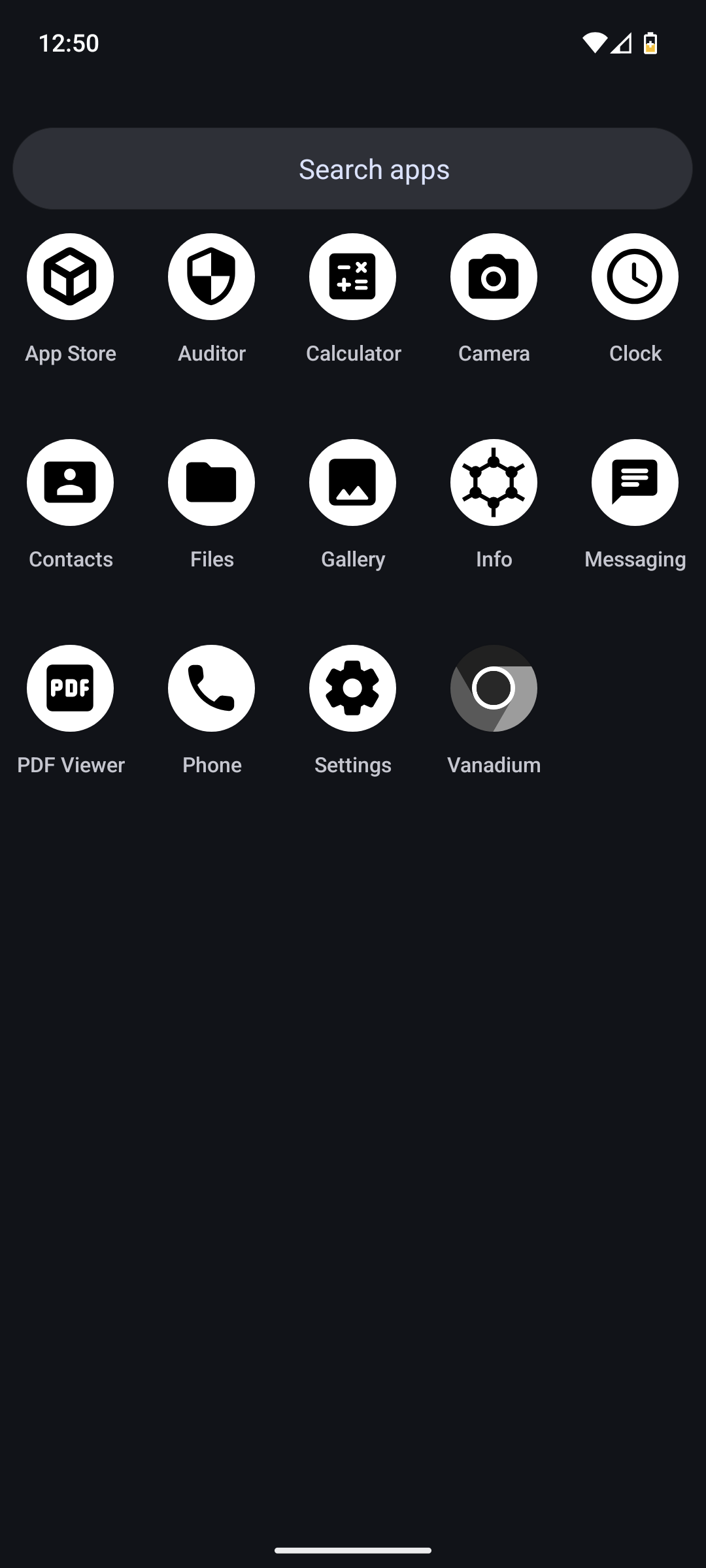GrapheneOS is a privacy-focused mobile operating system based on Android for Google Pixel devices. It seeks to be as secure as possible while still providing a usable and familiar experience for the person using it.
As mentioned in the description of the Foster Botanical Garden photography entry, I lost my phone in September of 2022. At the time, I had a Google Pixel 4a, and I really liked that phone for a few reasons, but especially because it was one of the last Pixel phones, really one of the last phones in general (at least from a large smartphone company) that still had a headphone jack. Anyways, by the time I lost it, it was too late to to replace it with the same model, so I ended up with a newer Pixel model about a month later. I bought the phone in part with the express purpose of trying GrapheneOS.
I had heard of this operating system as being an alternative to Google's version of Android that you could install on Pixel devices with way more security and privacy features than standard Android. The only reason I hadn't tried it on my old phone was because I had things set up on it already and I didn't want to reinstall everything, but replacing my phone gave me the opportunity to try it out. There's a bunch of hardware and software reasons(?) for why GrapheneOS is only supported on Google's phones, but I really liked the 4a, so I was going to get another Pixel anyways. As of the time of writing this (4 Oct, 2024), it's been about two years since I replaced my phone and installed GrapheneOS on the new one.
Installing GrapheneOS was surprisingly easy. I just followed the instructions for the Web installer off their site. I plugged the phone into the PC and after the initial setup, the entire installation process was basically just clicking a few buttons on the website and waiting a few minutes. After the installation and device setup, you are greeted with a mostly blank android launcher with only the most basic applications.


So, GrapheneOS definitely requires some setup after installing, but I actually really appreciate this approach. I can just install what I actually want to use and ignore anything I don't. I don't mind doing extra work setting up my devices if I can personalize things to only have what I need. I think the best thing about GrapheneOS is that once you get it set up and start using it, it's basically indistinguishable from 'stock' android. The operating system strips out any reliance on Google Play services, but still allows you to install them in a sort of sandboxed environment if you need them. This means you can install things through the play store, use google maps, or any other thing that needs Google Play services, but the limit what they have access to. I am doing a poor job of explaining it, so read about it here.
You can set the permissions for any app, stuff like network, location, camera and microphone permissions, nearby devices, notifications, and even stuff like gyroscopic sensors. For example, I really like Google's keyboard, Gboard, because it has the most accurate swipe typing I've tried. However, I don't really think it needs access to the internet, that seems kinda creepy, so I disabled all of its access to every service and permission I control.
Now, I can't speak to how GrapheneOS would perform on another phone. This could, and likely is, an issue specific to me and my device. However, it's still an issue I've had and I can't just ignore it. Basically, my camera has been very buggy and for the longest time, trying to record video would crash the entire operating system and force a reboot. Apps that needed camera access, something like taking a photo from a messaging app, would also frequently freeze the phone and reboot it. I honestly didn't really care about these issues since I rarely needed to use the camera from non-camera apps or record videos, but I get that most people will probably find that absolutely unacceptable. After updates, the crashing has improved somewhat and I can actually record videos now, but I still get crashes sometimes, two years later. Keep in mind, many more users have not had this issue and this is only my own experience. In all likelihood, you won't have the same problem if you try this OS, but there's definitely still some issues.
So, for most people, I think GrahpeneOS is "good enough". There are definitely sacrifices that go into removing Google's integration with your OS, but I think that a regular person could realistically use it and still be fine day-to-day. Even stuff that you might expect to have issues with on a non-standard OS worked. Things like compatibility with banking apps or apps failing to run in general were not problems at all in my experience. At the same time, there may be rare issues you run into that are hardly documented like my camera crashing problem. That combined with - let's call it poor PR and management skills - of the original lead developer who has since left the project may make you want to reconsider using this operating system. I definitely recommend against buying a pixel phone just because it runs GrapheneOS, but I think the additional security and control you get from this operating system makes an already solid phone even better and I personally intend to continue using it for the forseeable future.